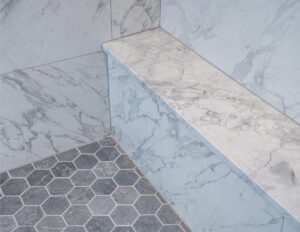Stacking in Kitchen Cabinets: The Good, the Bad, and the “Why Is My Spice Jar Stuck?”
Hey there, fellow organization warriors! Let’s talk about something we’ve all tried (and maybe regretted) at 2 a.m. while reorganizing our kitchens: stacking stuff in cabinets. Is it genius? A disaster waiting to happen? A little of both? We’re diving into the wild world of cabinet stacking today—pros, cons, and why sometimes you just need to call the pros (looking at you, Verified Builders in Denver).
Contents
- 1 Why Stacking Feels Like Winning at Tetris
- 2 When Stacking Becomes a “Help, I Can’t Find My Ladle!” Moment
- 3 Stacking Hacks That Won’t End in Tears
- 4 Vertical vs. Horizontal: The Eternal Debate
- 5 Materials Matter
- 6 “Should I Just Call a Pro?” (Spoiler: Sometimes, Yes.)
- 7 Stacking Showdown: A Handy Comparison
- 8 FAQs: Because Googling “Cabinet Emergencies” Is Stressful
- 9 Final Thoughts: Stack Smart, Not Hard
Why Stacking Feels Like Winning at Tetris
Let’s start with the obvious: stacking saves space. If you’ve ever lived in a home where the kitchen feels smaller than a cereal box (cough … Denver’s charming older homes cough), vertical storage is your best friend.
Pros we swear by:
- Maximize vertical space: Stack plates, bowls, or pans? Yes, please. It’s like giving your cabinets a caffeine boost.
- Accessibility (when done right): Keep daily-use items at eye level. No more yoga poses to reach the coffee mugs.
- Cost-effective: Avoid expensive custom home remodeling by working with what you’ve got.
But here’s the kicker: Stacking only works if you’re intentional. Throw everything in haphazardly, and you’ll face the Cabinet Avalanche of 2024. Trust us—we’ve seen it.
When Stacking Becomes a “Help, I Can’t Find My Ladle!” Moment
For every pro, there’s a con. Let’s keep it real.
Cons that’ll make you rethink your life choices:
- Clutter chaos: Stack too much, and suddenly your cabinet resembles a thrift store bin.
- Weight worries: Ever heard a cabinet shelf groan? Not cute. Heavy stacks can strain shelves—especially in older homes that haven’t had luxury home renovations.
- Aesthetic nightmares: Pinterest-worthy kitchens don’t show the 10 mismatched Tupperware lids shoved in the back, do they?
And let’s not forget: Stacking requires skill. If you’re not a Tetris prodigy, maybe leave it to the design build construction experts. Just saying.
Stacking Hacks That Won’t End in Tears
Alright, let’s get tactical. Here’s how to stack like a pro (or at least fake it ‘til you make it).
Vertical vs. Horizontal: The Eternal Debate
- Vertical stacking: Ideal for plates, baking sheets, cutting boards. Bonus: It looks clean.
- Horizontal stacking: Better for bowls, pots, and that collection of novelty mugs from your aunt.
Pro tip: Use shelf risers. They’re like bunk beds for your dishes—and they’ll make your interior remodeling dreams feel achievable.
Materials Matter
- Heavy-duty shelves: If you’re stacking cast iron pans, reinforce those shelves. Denver’s home addition contractors at Verified Builders can hook you up.
- Non-slip liners: Because nobody wants a gravy boat landslide.
“Should I Just Call a Pro?” (Spoiler: Sometimes, Yes.)
Look, we get it. Stacking feels like a DIY win… until it isn’t. Here’s when to wave the white flag and call Verified Builders, Denver’s go-to home remodeling company:
- Your cabinets are older than your smartphone.
- You’re dreaming of whole home remodeling but don’t know where to start.
- That “quick fix” turned into a Honey, I Shrunk the Kids situation.
Their kitchen remodeling services include custom shelving, space optimization, and saving you from your own ambition. FYI—they also handle basement contractors and home restoration if you’re feeling ambitious.
Stacking Showdown: A Handy Comparison
Let’s break it down with a table even your DIY-hating spouse will appreciate:
| Stacking Style | Best For | Watch Out For |
|---|---|---|
| Vertical | Plates, cutting boards | Overloading shelves |
| Horizontal | Bowls, pots | Wasted vertical space |
| Nested | Mixing bowls, Tupperware | Items getting “lost” |
FAQs: Because Googling “Cabinet Emergencies” Is Stressful
1. “How much weight can my cabinets handle?”
It depends on shelf material and installation. Particleboard shelves? Be gentle. Solid wood or metal? Go wild (within reason). When in doubt, ask Verified Builders—they’re wizards at home renovation company magic.
2. “Can stacking damage my dishes?”
Yep. Ceramic and glass can chip if stacked roughly. Use felt pads or cloth between items. Or, you know, switch to paper plates. We won’t judge.
3. “My cabinets are tiny. Any hope?”
Absolutely! Adjustable shelves, pull-out drawers, or a custom home remodeling project can transform cramped spaces. Verified Builders offers interior remodeling that’ll make your kitchen feel like a Marie Kondo ad.
4. “Should I stack appliances?”
Only if you enjoy playing Jenga with your blender. Keep heavy appliances on the counter or in deep drawers.
Final Thoughts: Stack Smart, Not Hard
Stacking in kitchen cabinets is like dating: It works when you’re thoughtful, fails spectacularly when you’re lazy. Whether you’re a DIY daredevil or ready to call in the cavalry (Verified Builders, we see you), balance is key.
And hey, if your cabinets still look like a garage sale reject pile, maybe it’s time for a luxury home renovation. Denver’s Verified Builders can turn your kitchen chaos into a masterpiece. Just saying.
Ready to upgrade? Give them a shout—they’re the home remodeling company near me you’ve been scrolling for. Now go forth and stack responsibly. Or don’t. We’ll be here with a toolkit and a sympathetic eye-roll. 😉


